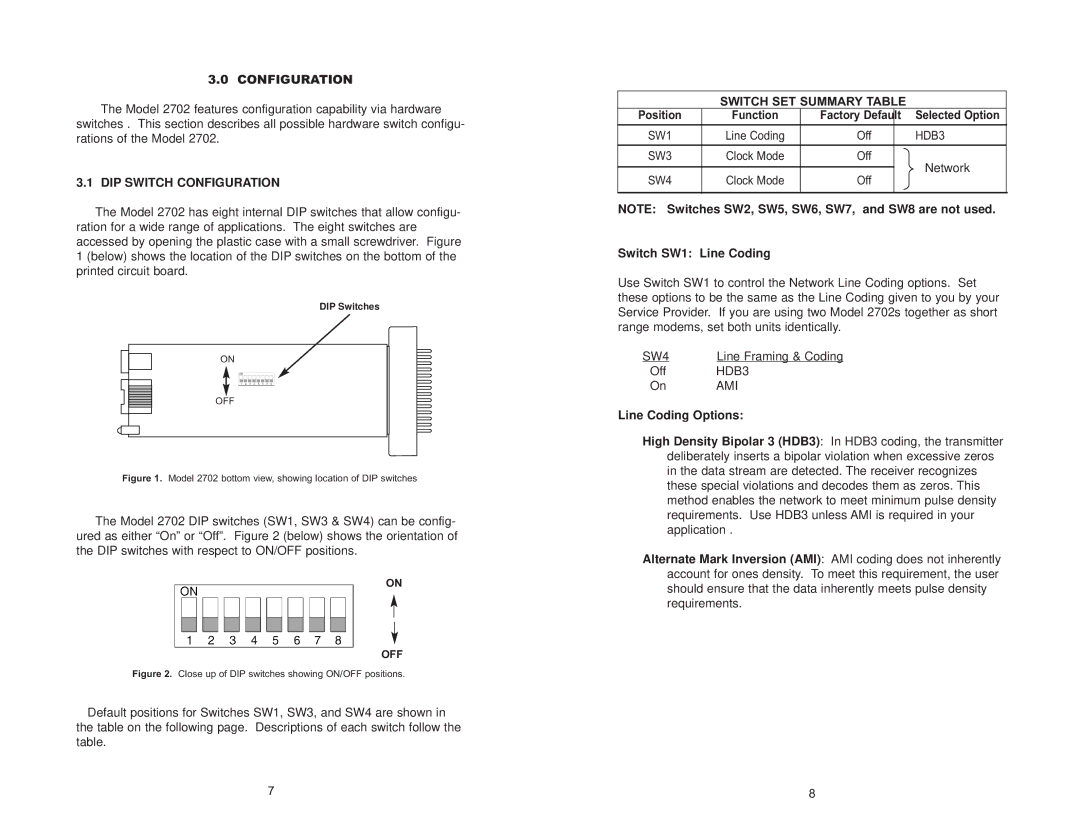2702 G.703 specifications
The Patton Electronics 2702 G.703 is a highly regarded solution in the realm of telecommunications, particularly known for its ability to convert G.703 digital interfaces into other manageable forms. This device plays a crucial role in the deployment of voice and data services over TDM (Time Division Multiplexing) networks, making it a go-to choice for service providers and enterprises needing to optimize their communications infrastructure.One of the standout features of the Patton 2702 G.703 is its versatility. It can support various TDM interface types, including E1, T1, and coaxial connections, which allows for seamless integration into existing network configurations. This adaptability is critical for organizations looking to enhance their network without investing in entirely new systems.
Moreover, the device supports both unframed and framed G.703 E1 and T1 signals, giving users the flexibility to select the configuration that best suits their operational needs. The Patton 2702 is equipped with advanced error correction capabilities, which enhance the reliability of data transmission, particularly for mission-critical applications. This ensures that businesses can maintain seamless operations with minimal disruptions.
Another noteworthy characteristic of the device is its robust management capabilities. The Patton 2702 offers a web-based interface for configuration and monitoring, allowing network administrators to easily manage their devices and troubleshoot any potential issues. This feature is complemented by SNMP (Simple Network Management Protocol) support, which integrates with existing network monitoring solutions for enhanced visibility.
The device also supports in-band management, enabling remote control and diagnostics over the same connection used for data transfer. This capability significantly reduces the need for on-site intervention, ultimately improving operational efficiency and reducing costs.
In terms of physical characteristics, the Patton 2702 is housed in a compact and durable chassis, suitable for rack-mounted or standalone deployment. Its design prioritizes thermal management and operational reliability, ensuring long-term performance in various environmental conditions.
Overall, the Patton Electronics 2702 G.703 is a multifaceted solution tailored to meet the demands of modern telecommunications. Its advanced features, robust management options, and flexible integration capabilities make it an invaluable asset for businesses looking to streamline their communication processes while maintaining the integrity and reliability of their networks.

